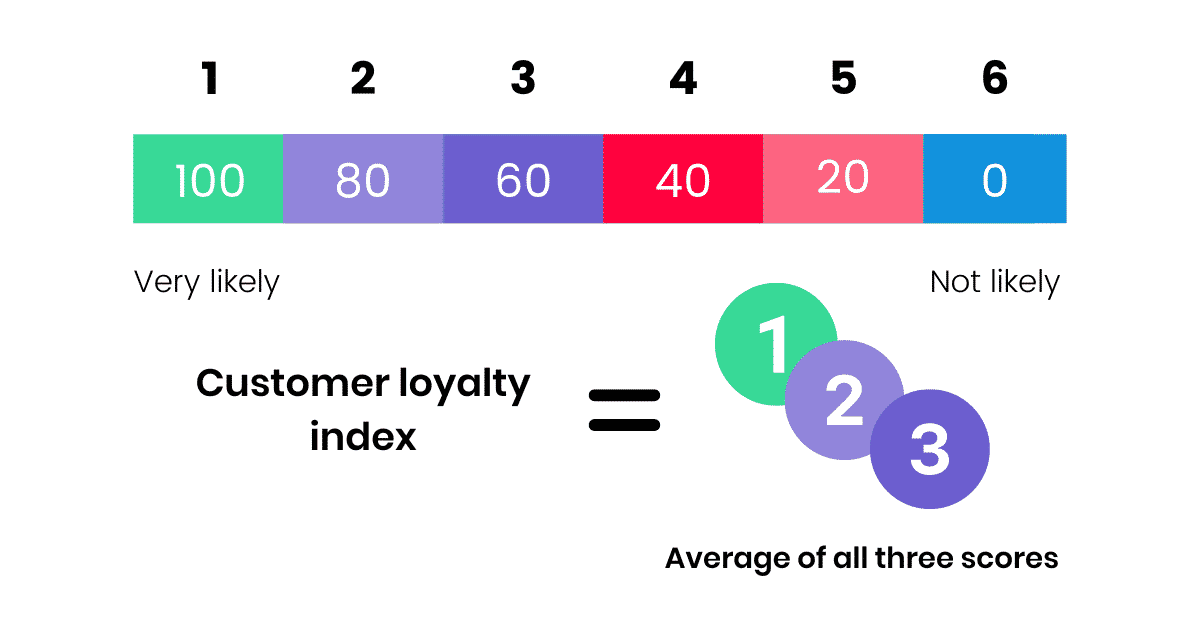
What's the bread and butter of any successful business? Loyal customers.
Loyal customers will support your brand long-term, spread positive word-of-mouth awareness, and are far more likely to purchase new products and services.
When learning how to measure customer loyalty, it's important to go into the research process with a set of goals for what you want to achieve.
What specific values do you want your customers to share? How do you want to use this information?
In this post, we'll tell you how to measure customer loyalty the right way, and why it matters. Let's go!
Why You Should Measure Customer Loyalty
Customer loyalty needs to be measured for a few key reasons.
First off, measuring customer loyalty improves retention rates. When customers are pleased with the products, services, and customer experience a company provides, they're less likely to leave.
In fact, most consumers report a good experience influences their loyalties to brands.
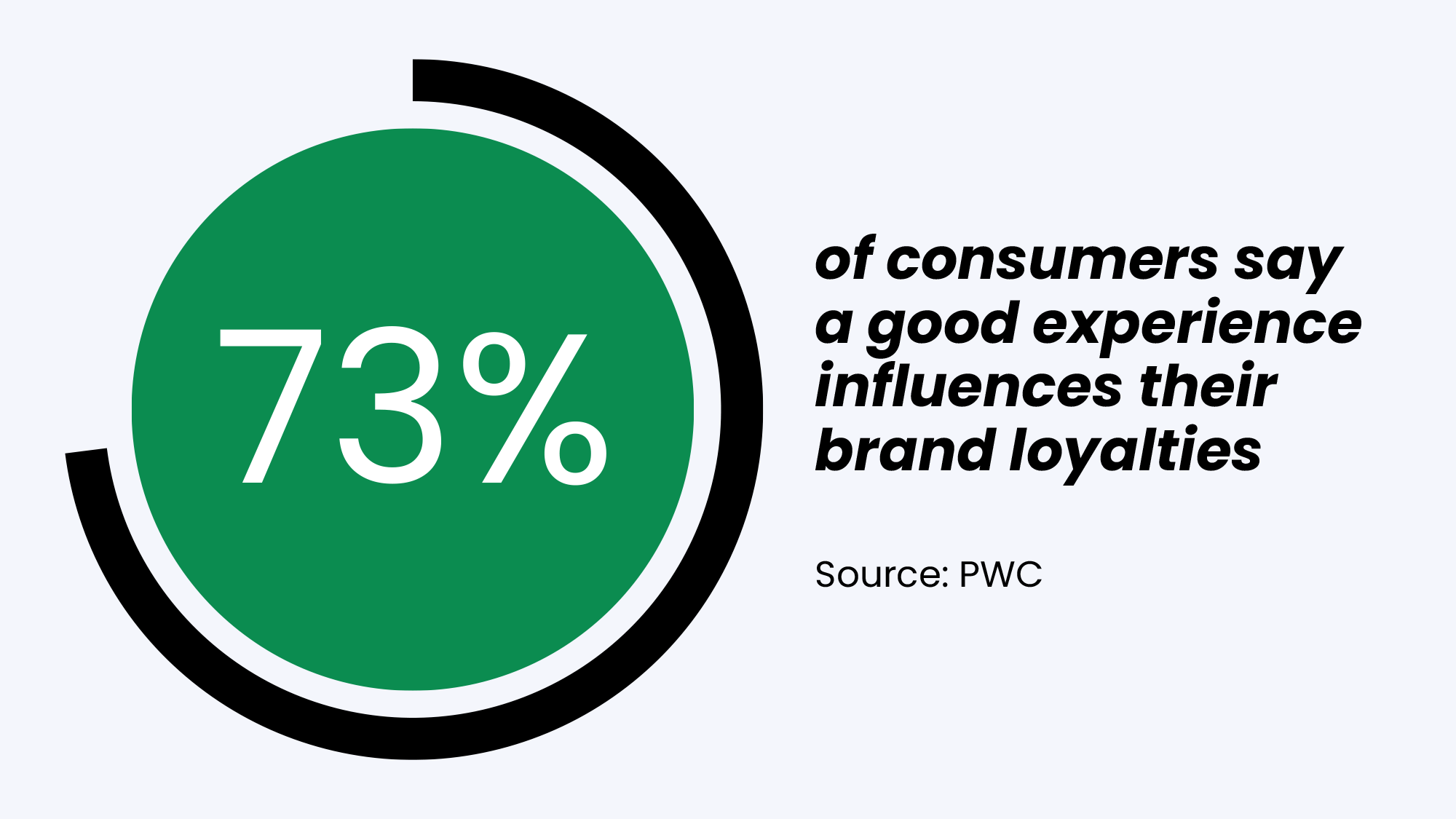
Also, measuring customer loyalty will reveal the best ways to communicate with ongoing shoppers, which can help enhance retention methods.
Related to this, gathering customer insights on loyalty can also save a business significant costs.
Why?
Because constantly trying to attract new customers is expensive. Usually, this involves multiple campaigns and outreach strategies, which can get expensive - and fast.
Focusing on improving relationships with loyal customers cuts down on these costs, as they require less marketing and outreach to remain with a business they love.
The Best Way to Measure Customer Loyalty: Surveys
Customer surveys are the best way to measure loyalty levels.
When using customer loyalty surveys, brands are able to gather feedback directly from the customer, eliminating any guessing games.
PS: We suggest partnering with a third-party customer survey company to help you with the survey process.
With customer loyalty surveys, questions are structured specifically to gather in-depth data.
The key goal of these surveys is to provide insight on customer...
- Preferences
- Satisfaction levels
- Chance of repeat business
Using this information, businesses can make data-driven decisions based on actual customer feedback.
Common ways customer data can be used to increase loyalty include:
- Improved customer services
- Targeted marketing campaigns
- Product additions/enhancements
- Benchmarking
What's more, all of these actions can be used to help personalize the customer experience.
Customers need to feel a personal connection to a brand - which is why 70% of them say they are more loyal to brands who understand their individual needs.
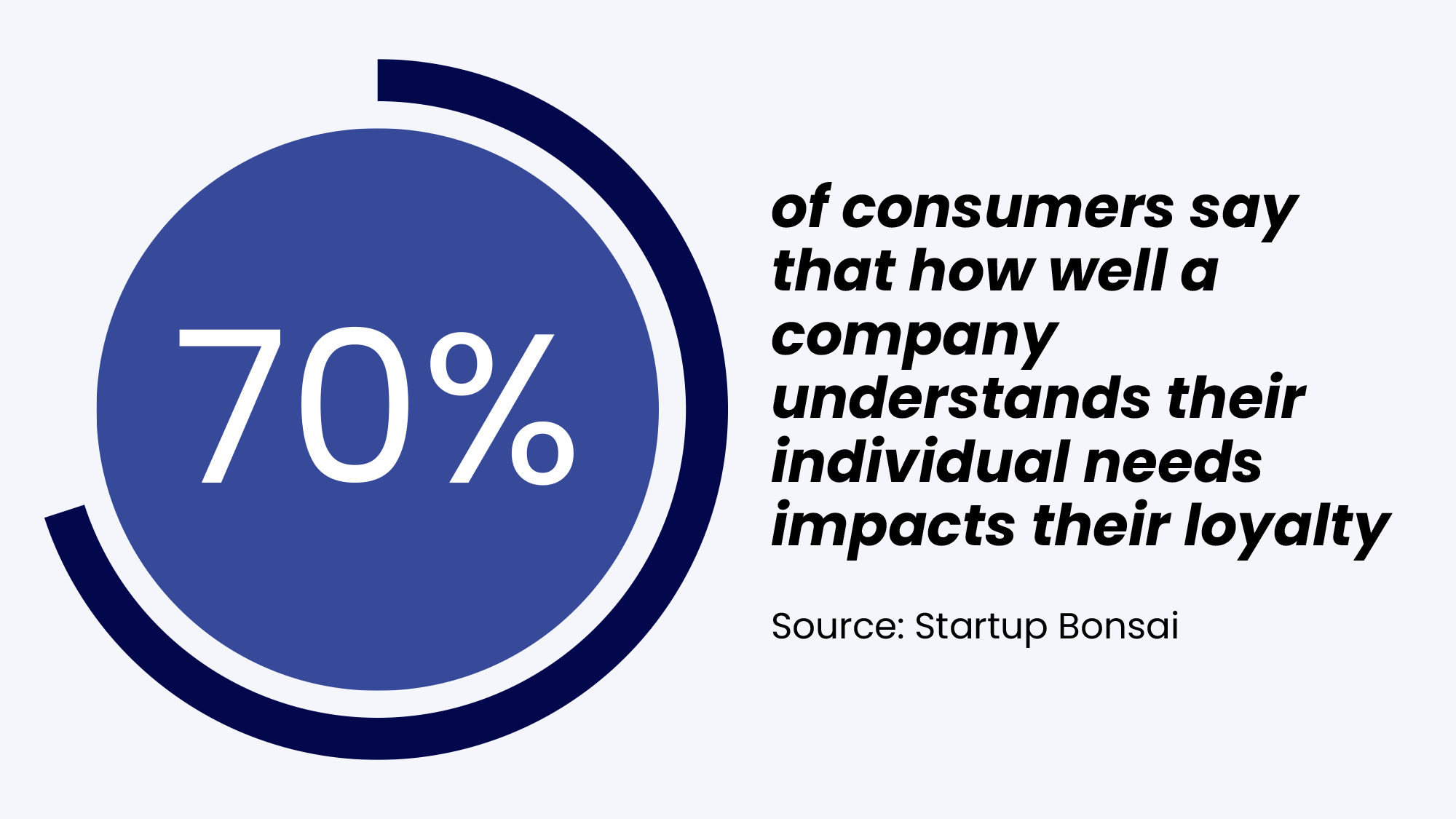
Pay Attention to These Metrics When Measuring Loyalty
We understand that gathering customer data can seem overwhelming. With so many different metrics to keep an eye on, where does one even start?
To simplify things, we've included the key customer satisfaction metrics to consider when crafting your loyalty survey.
Customer Retention/Churn
Measuring customer retention and churn levels is a great metric to start with. The term "churn" refers to the rate at which customers cease using the services of a brand.
If a business is experiencing high churn rates, then that should set off an alarm that something needs to be corrected. If the churn rates are low, that's a good sign.
To measure customer retention, survey questions can center heavily around satisfaction rates, likelihood to recommend, and common pain points.
The feedback will indicate what needs to change and what a brand is doing right.
Customer Lifetime Value (CLV)
Customer lifetime value, or CLV, is an important metric to track.
CLV is the total revenue a customer will generate for a brand, from their first purchase to their last. Tracking this metric will not only help businesses hang onto current customers, but attract new ones too.
Measuring CLV is key for determining which products/services customers use and enjoy. This is especially important, as businesses can learn which offerings aren't worth spending money on.
As a result, a significant amount of money can be saved and used elsewhere.
Net Promoter Score (NPS)
NPS measures how likely customers are to recommend a brand.
Asked on a Likert scale from 0 to 10, customers can easily rate their likelihood to do so.
Responses are broken up into three categories:
- Promoters
- Passives
- Detractors
Promoters are those that score 9 or 10 on the scale. They love your brand and are happy to recommend your services to others.
Passives rate 7 or 8 and like your brand, but something is holding them back from becoming promoters. Passives can likely be swayed into being promoters with a little extra work.
Detractors score 6 and lower, and aren't fans of your brand for whatever reason. The goal is to find out why, and hopefully turn this group into passives and promoters.
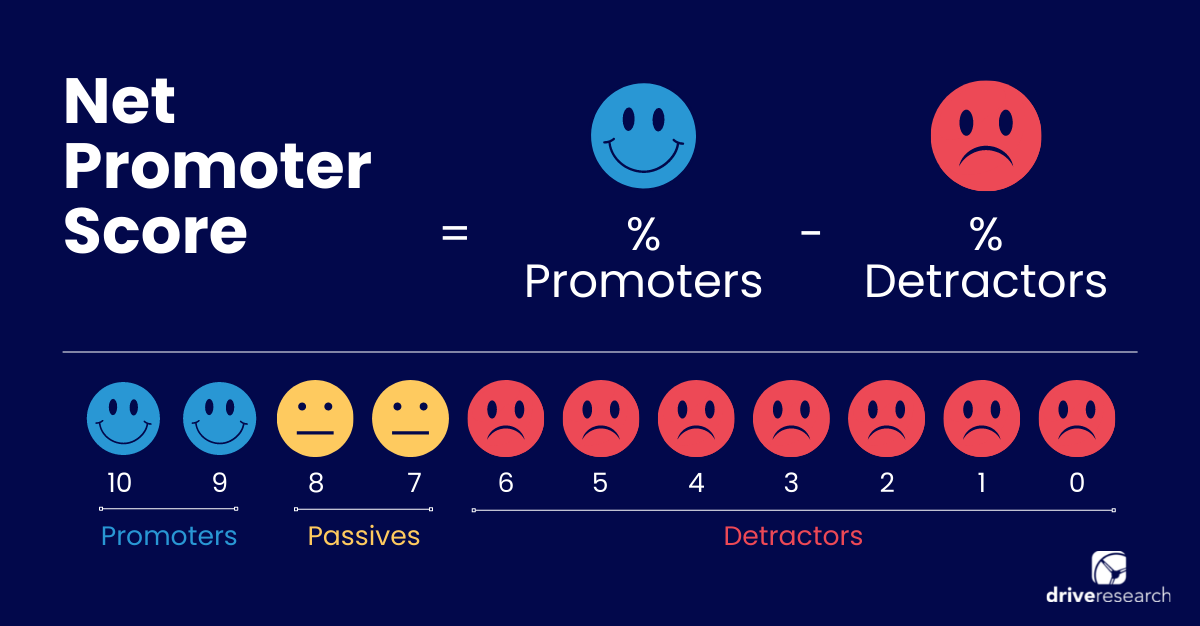
Customer Satisfaction (CSAT)
Measuring CSAT is key when researching customer behavior. In fact, it's one of the most important customer metrics out there.
CSAT is so important because without satisfied customers, there's no loyalty!
Asking questions in a survey to gauge satisfaction levels is also a great way to measure how strong customer relationships actually are.
These questions will gauge how satisfied customers are with products, services, and outreach methods.
Since higher levels of satisfaction often equate to increased loyalty levels, this metric is a must for any brand that wants to hang onto repeat customers.
Businesses can use CSAT data to increase loyalty through...
- Identifying areas of improvement
- Enhanced customer satisfaction efforts
- Building strong customer relationships
Customer Effort Score (CES)
Customer effort score measures how easy or difficult it is to complete simple tasks on a brand's website or app.
Asked on a 5-point Likert scale, customers will rate their interactions from difficult to very easy.
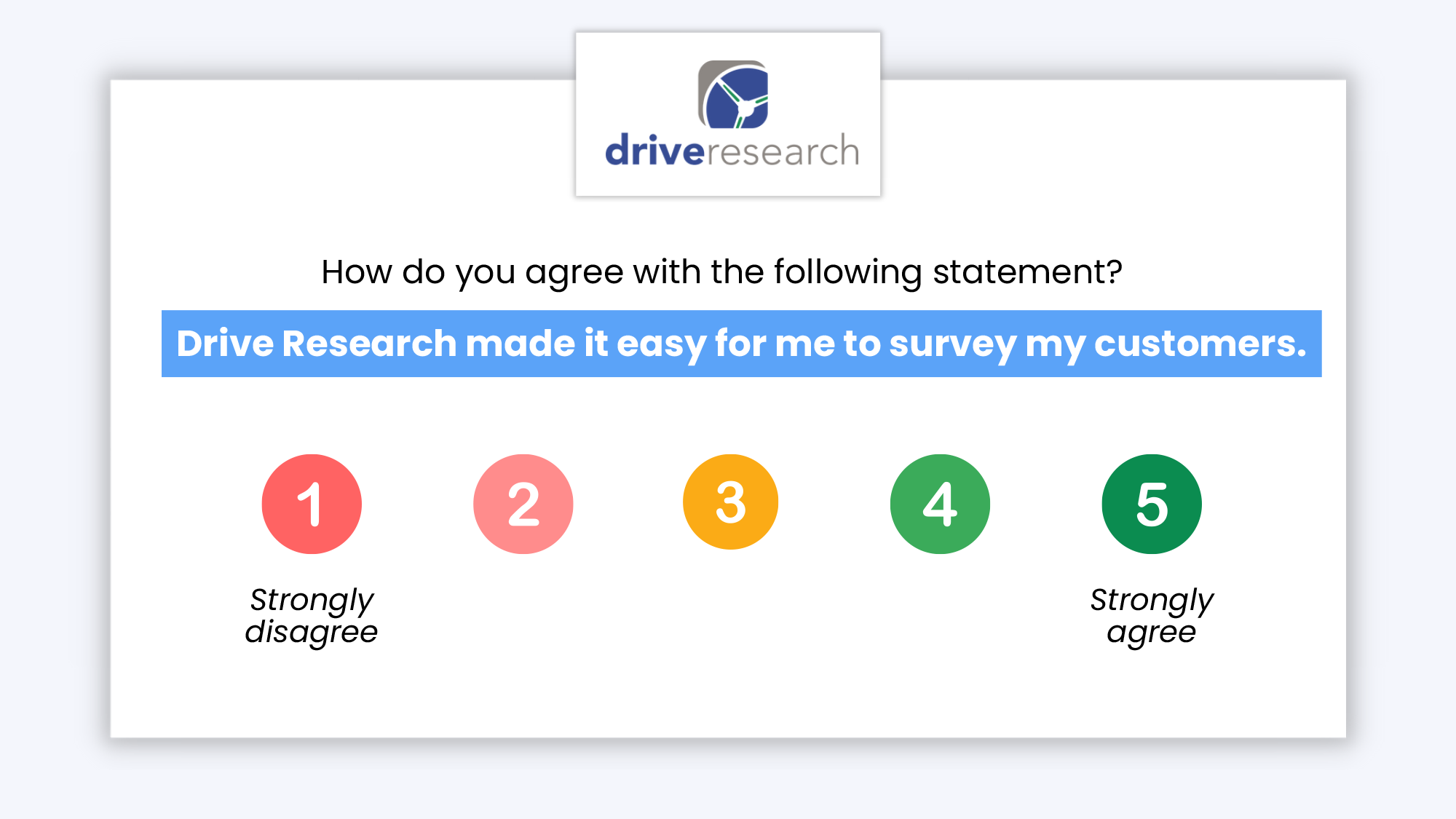
This is another essential metric to measure when calculating customer loyalty levels. Customers will quickly lose interest in a brand that doesn't have streamlined processes, and will likely switch to a competitor.
Measuring CES essentially provides a view of how effective a brand's user experience is. A clunky online experience will only work to push away customers, while a smooth one will attract more.
Customer Engagement
Tracking customer engagement provides direct insight into loyalty levels.
When customers continuously interact with a brand they like, it's easy for them to become engaged and interested in the products/services.
Customers who are engaged with a brand quickly become loyal, as high engagement levels indicate a strong connection with the brand. This is important, as a large part of customer loyalty is the emotional bond shoppers have with a brand.
Engagement is pretty simple to track in a survey. Questions focus on:
- Customer interactions
- Time on website
- Use of rewards/loyalty programs
Using these insights, brands will easily be able to determine customer loyalty levels. What's more, the feedback will also allow brands to strengthen customer bonds.
Customer Referrals
Spreading the word counts! One of the best ways to measure customer loyalty is through the amount of referrals a brand gets.
Referrals are a strong indicator of loyalty because only satisfied customers would recommend the services of a brand to someone else.
Customers commonly make referrals to...
- Friends
- Family
- Colleagues
Chances are, you've even made a referral or been referred to a brand by someone you know.
This type of recommendation also enhances the trustworthiness of a brand--something customers place high value on.
Referral rates can increase quickly due to their word-of-mouth nature, creating more business for a brand and hopefully creating loyal connections.
What's more, customers brought to a brand via referrals typically become loyal because they've been referred by someone they trust.
Customer Repeat Purchases
This one's pretty basic.
Loyal customers will repeatedly purchase from a brand they love. But repeat purchases signify more than just overall satisfaction.
When customers continue to buy from a brand, this also shows trust and a positive experience.
Additionally, repeat customers also signify that a brand is winning against the competition. Since customers could go anywhere, and they're choosing to go back to the same brand, this is a great sign that a brand is thriving in its industry.
What encourages repeat purchases? A number of factors.
In fact, the best-case scenario is that a brand is practicing all of these...
- Easy purchasing experience
- Offering quality items
- Fostering connection with customers
- Excellent customer service
Lastly, repeat customers can easily turn into loyal brand advocates who will spread awareness about your offerings!
Customer Loyalty Index
Measuring loyalty levels among a brand's base, the customer loyalty index is an essential metric to use.
A customer loyalty index gathers data from a number of sources to create a larger picture. Meaning, it will grab data from customer satisfaction surveys, repeat purchase behavior, retention rates, referrals, and so on.
This allows brands to see a numerical representation of customer loyalty rates.
Ideal for tracking changes over time, the index also makes it easy for brands to compare their performance across different time periods and other segments.
The index is important for fostering customer loyalty because it provides a clear view of shopping trends over time. This makes it simple for businesses to pinpoint areas of success, allowing them to continuously improve services.
Customer Upsells
Customer upsells can boost loyalty by providing insights into their needs and preferences.
Upselling provides relevant products that help the customer's overall shopping experience, which leads to higher levels of satisfaction.
This also increases trust, as upselling caters to a customer's personal interests by providing recommendations. As a result, this boosts customer loyalty levels.
What's more, successful upsells can have a direct effect on customer lifetime value, which we discussed earlier. This is mainly due to upselling increasing loyalty rates.
Other Market Research Methods to Measure Customer Loyalty
Don't worry, there are even more ways to measure customer loyalty.
In these next sections, we'll briefly cover why focus groups and in-depth interviews are important to customer loyalty.
Focus Groups
Focus groups are a form of qualitative research that's used to gather details about the shopping experience.
Led by a trained moderator, focus groups to determine customer loyalty will include a small number of shoppers. They will dive into the shopping experience, discussing a variety of topics.
Because focus groups foster natural conversation, smaller details come out that may not with other forms of research. These small details can ultimately be very helpful for brands to know.
Additionally, the conversational nature of focus groups can naturally generate new subtopics that will provide useful feedback.
In-Depth Interviews (IDIs)
IDIs are interviews between a customer and a trained research interviewer.
Similar to focus groups in their conversational nature, IDIs can bring to light smaller details that quantitative research would not. This is done largely in part to the interviewer creating a positive rapport with the customer.
When the customer feels comfortable in this setting, they will naturally share more.
General topics when exploring customer loyalty through IDIs include measuring their thoughts, attitudes, and experiences with a product or service.
These detailed insights are great for shaping an idea for how loyal a brand's customer base is.
FAQs About Measuring Customer Loyalty
Many factors go into measuring customer loyalty. Research methods to measure this range from large-scale surveys to qualitative tools like focus groups.
To wrap things up, let's review a few common questions when it comes to customer loyalty.
What Is the KPI For Customer Loyalty?
The main KPI for measuring customer loyalty is net promoter score (NPS).
Measuring NPS is essential for brands curious about loyalty as it tracks the likelihood to recommend them to others.
Of course, only loyal customers would recommend a brand to others, so this KPI will reveal this to a brand through a simple Likert scale.
Responses are divided into three groups: promoters (will definitely recommend), passives (will likely recommend), and detractors (unlikely to recommend).
What Are the 4 Cs of Customer Loyalty?
The four Cs of customer loyalty are...
- Commitment: Customers are committed to the products and services they use. Satisfaction plays a large role in how committed customers are to a brand.
- Connection: Brands must create emotional bonds with customers. Customers are people, and deserve to shop from brands that personalize their experience.
- Communication: Customers appreciate brands that communicate throughout their shopping experience. Often, this will include brands being transparent about offers, opportunities, and so on.
- Contribution: Brands that acknowledge customer efforts will likely see higher rates of loyalty. This can look like incentives, rewards programs, and other similar strategies.
What Factor Is Used to Measure Customer Loyalty?
A key factor used to measure loyalty is customer retention.
Think of it this way: would you continuously interact with a brand that you didn't like? Absolutely not!
Retention is directly tied to loyalty, as customers who are connected to a brand will continue to shop from them.
And with customer retention comes repeat purchases, another important factor to measure when tracking customer loyalty. Both retention and repeat purchases indicate that customers are happy with a brand.
How Are Customer Trust and Loyalty Measured?
As we've covered, customer trust and loyalty can be measured in many different ways.
What it comes down to is the needs of a specific brand. If they're looking for broad, quantitative data, then surveys are a fantastic option. It's here that they can explore key metrics like NPS, churn rates, customer lifetime value, and so on.
On the other hand, a brand may want more detailed customer data. In this case, they can invest in a more qualitative approach like focus groups and in-depth interviews.
No matter the method, customer loyalty can be measured through a variety of tools. The goal is to gather quality insight to maintain and grow important customer relationships!
Contact Our Customer Satisfaction Company
Maintaining customer loyalty is a key part of a thriving business, and plays a large role in high satisfaction levels.
Drive Research is a market research company located in Syracuse, NY. Our team is well-versed in customer satisfaction and loyalty research, and will work with your brand to provide relevant, quality data.
Want to learn more about our market research services? Get in touch with us today.
- Message us on our website
- Email us at [email protected]
- Call us at 888-725-DATA
- Text us at 315-303-2040

Lark Allen
As a Content Marketing Specialist, Lark has a strong background and passion for creative, professional, and journalistic writing. She is also a self-proclaimed music freak and 90s enthusiast.
Learn more about Lark, here.

